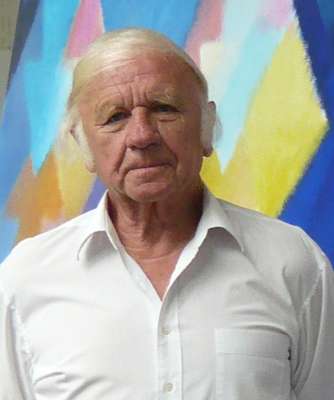| 1950-1953 |
Studied at the painting class of the Academy of Arts in Düsseldorf which he completed by taking the state examination. |
| 1953-1956 |
Studies of Philosophy at the University of Cologne with a State Examination. |
| 1957 |
Heinz Mack und Otto Piene found Group ZERO in 1957 in Düsseldorf, which Günther Uecker joins, organise the Abendausstellungen which later become legendary and edit the Catalogue Magazine ZERO Vol. I and Vol. II. |
| 1958-1959 |
First Licht-Reliefs, Lichtkuben (light cubes) and Lichtstelen (light pillars). From the idea of a pulsing pillar of light in the desert, the model of which is exhibited in the Iris Clert gallery in Paris, develops the idea for the so-called Sahara-Projekt; a Utopia which has accompanied the artist ever since. |
| 1962-1968,1976 |
Times of large working expeditions into the Algerian desert, where he experimented with light in desert for the first time, and to the Arctic. |
| 1964-1966 |
Lived and worked in New York. |
| 1966 |
First New York solo exhibition called “Forest of light” at the renowned Howard Wise Gallery.
In the Kunsthalle Bonn the ZERO group had a last joint exhibition. Shortly afterwards they disbanded. Together they also organised with Uecker the ZERO Festival at the railway station Rolandseck, where ca. 1000 people celebrate the end of the ZERO era. |
| 1967 |
Shows works again at the Howard Wise Gallery in the exhibition Lights of Orbit. |
| 1968 |
For the film “Tele Mack, Tele-Mack, Telemack”, which was documented by the German television, he realised the Sahara Project in the Tunisian desert.
Mack was appointed as a member of the Academy of Arts, Berlin.
Stage design according to a sonata from Beethoven for a ballet production of the German Opera on the Rhine in Düsseldorf. |
| 1969 |
Stage design for Dürrenmatt’s Titus Andronicus from Shakespeare, Schauspielhaus Düsseldorf.
Stage design for the ballet production Reflexionen according to music from Frank Martin, German Opera on the Rhine in Düsseldorf. |
| 1970 |
Mack was appointed Professor and invited to lecture in Osaka (Japan).
At the XXXV Biennale in Venice in the same year, he represented Western Germany together with Uecker, Pfahler and Lenk. |
| 1971 |
36 m high Wasserwolke for the Olympia Stadium, Munich |
| 1974 |
A commission for a design for a sculpture by the UNO in New York. The artist designs a 70m high Friedens-Stele (Peace Pillar). Despite approval by the UNO and the city of New York the decision makers in BRD drop the artist and his idea. |
| 1978 |
Richt-Lichtfest-Inszenierung for one night before the reconstruction of the city museum Abteiberg in Mönchengladbach
Lectures at the University of Toronto and in the Congress Hall in Berlin. |
| 1980 |
Artistic design for the international World Energy Conference in the Olympiahalle, Munich |
| 1985 |
Lectures at the Sommerakademie in Salzburg |
| 1987 |
Lectures at the Technical University in Berlin |
| 1990 |
Production of the film Lichtkunst-Heinz Mack |
| 1992 |
Resigns from the Academy of Arts, Berlin |
| 1959 |
Art Award of the city of Krefeld, Germany |
| 1963 |
Premio Marzotto |
| 1965 |
1. Prix des arts plastiques of the 4th Biennale de Paris |
| 1970 |
Adolf-Grimme Special Award for his film Telemack |
| 1971 |
Special Award from the Film Biennale in Venice for his film Telemack |
| 1979 |
1. prize of the international competition ‘Licht 79’, Netherlands |
| 1992 |
Great Culture Award of the Sparkassen-Kulturstiftung Rheinland |
| 2004 |
Mack received the Große Verdienstkreuz of the Federal Republic Germany in recognition of his works and his commitment as a cultural representative. |
| 2009 |
Awardee of the Ehrenring of the city of Mönchengladbach. |




